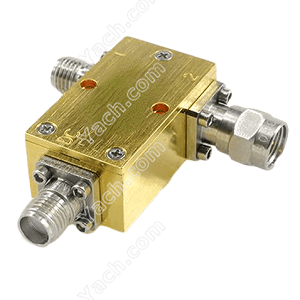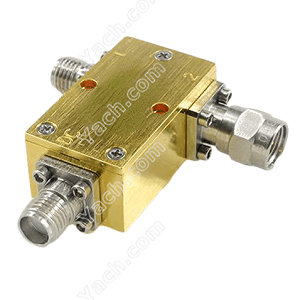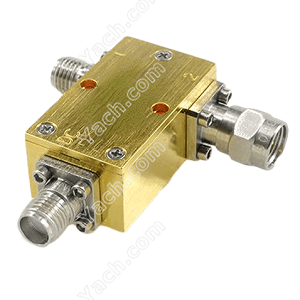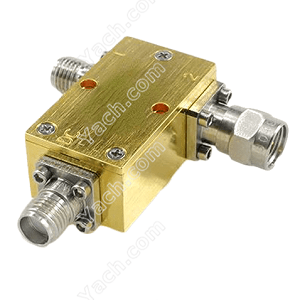What is a waveguide horn antenna?
Antenna is a kind of converter, which transforms the guided wave propagating on the transmission line into electromagnetic wave propagating in unbounded medium (usually free space), or vice versa. The main function is to turn the RF signal into electromagnetic wave or electromagnetic wave into RF signal.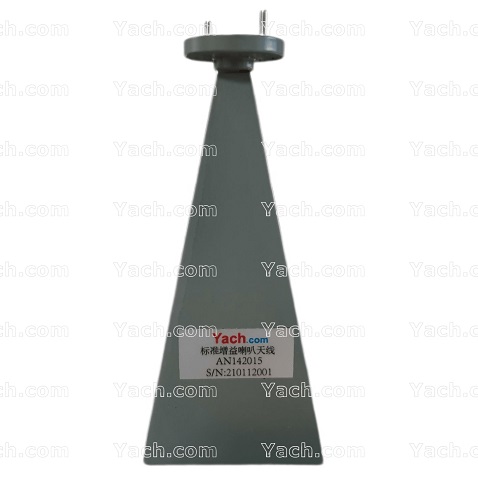
Waveguide antenna is an antenna that guides RF energy from air medium to waveguide, and vice versa. Once RF energy is captured, it is conducted through waveguide interconnection or picked up by coaxial interface, and then transmitted through coaxial components. Vice versa, because the waveguide antenna is a symmetrical system. The frequency range and antenna polarization depend on the size and type of waveguide antenna, which has many standard forms.
Waveguide horn antenna
Waveguide horn antenna is also called horn antenna. It is composed of a uniform waveguide and a horn waveguide with slowly increasing cross section. Waveguide horn antenna is one of the most commonly used microwave antennas, which is generally used as radiator. Its advantage is wide working frequency band; The disadvantage is that the volume is large, and for the same aperture, its directivity is not as sharp as that of paraboloid antenna.
Waveguide horn antenna is also an aperture antenna, and its internal metal wall gradually transitions to ensure the impedance matching between the waveguide port and the free space. In this way, the aperture and axial length of the waveguide horn antenna can be adjusted to obtain the gain and directivity required for a given application.
Waveguide horn antenna can be designed with metal ridge or dielectric structure, which changes the impedance or bandwidth characteristics of horn antenna. In general, Waveguide Horn Antennas exhibit high gain and high directional beam characteristics, which makes them very suitable for microwave / millimeter wave testing, sensing (radar) and satellite communication (often paired with truncated Paraboloid Antennas).
Classification of Waveguide Horn Antennas
[pyramid horn]
Also known as pyramid horn antenna, its internal cross section is rectangular, such as the end of the antenna. Usually used with rectangular waveguides.
[sector horn]
One side expands outward, and the other side is parallel to the plane of the original waveguide. It can be divided into E-plane sector horn antenna and H-plane sector horn antenna.
[conical horn]
Conical horn antenna has a circular section, which is usually used with circular waveguide and is less than rectangular horn antenna.
[index horn]
It is an antenna with full side, which is usually used in high-performance applications, such as satellite communication antenna and feed horn of radio telescope.
[corrugated horn]
Corrugated horn antenna is also widely used in satellite antenna and feed horn of radio telescope.
[lens horn]
The lens antenna uses the characteristics of the lens (convergence and divergence) to focus the RF energy captured by the waveguide antenna to the point source. The point source is usually a coaxial probe (receiver), and the waveguide antenna is used as the feed antenna. Lens antennas are usually used in applications that require broadband and high directivity antennas.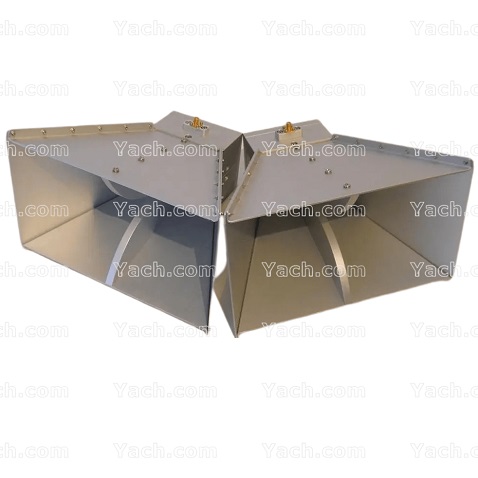
Characteristics and application of Waveguide Horn Antenna
In the waveguide horn antenna, the plane electromagnetic wave conducted by the waveguide is gradually transformed into a curved wavefront propagating in free space. In a rectangular antenna, the waveguide mode is usually TE10 or TE01 with a curved wavefront. The sector horn antenna emits cylindrical wavefront, and the conical horn antenna emits spherical wavefront. The flare of the horn affects the gain, beam width and directivity of the antenna response. The wider the flare, the wider the beam width, and the lower the directivity and gain. Pyramidal / rectangular horn antennas often damage considerable sidelobes due to the phase error related to horn transition. Nonlinear flares of horns (soft horns), such as corrugations, dielectric wall linings, or strips perpendicular to the direction of electromagnetic field propagation, are sometimes used to correct this situation.
Various horn antennas exhibit different bandwidth characteristics, but generally "simple" horn structures tend to have narrow operating bandwidth caused by impedance matching transition. To increase this bandwidth, ridges or dielectric lenses / inserts can be added to allow wider bandwidth impedance matching and greater utility of the waveguide band. Dielectric lens can also be used to convert the curved wavefront at the output of horn antenna into plane wavefront. These are often called horn lens antenna.
Considering the high gain, directivity and power processing of Waveguide Horn, these antennas are often used to test other antennas, free space of electric characteristic medium, electromagnetic compatibility / electromagnetic interference (EMC / EMI), radar and other applications.
- 上一篇:The difference between the bias tee (Bias-T) and DC Block? [2022-05-28]
- 下一篇:PIN Diode Switches SW517181 [2022-05-24]


